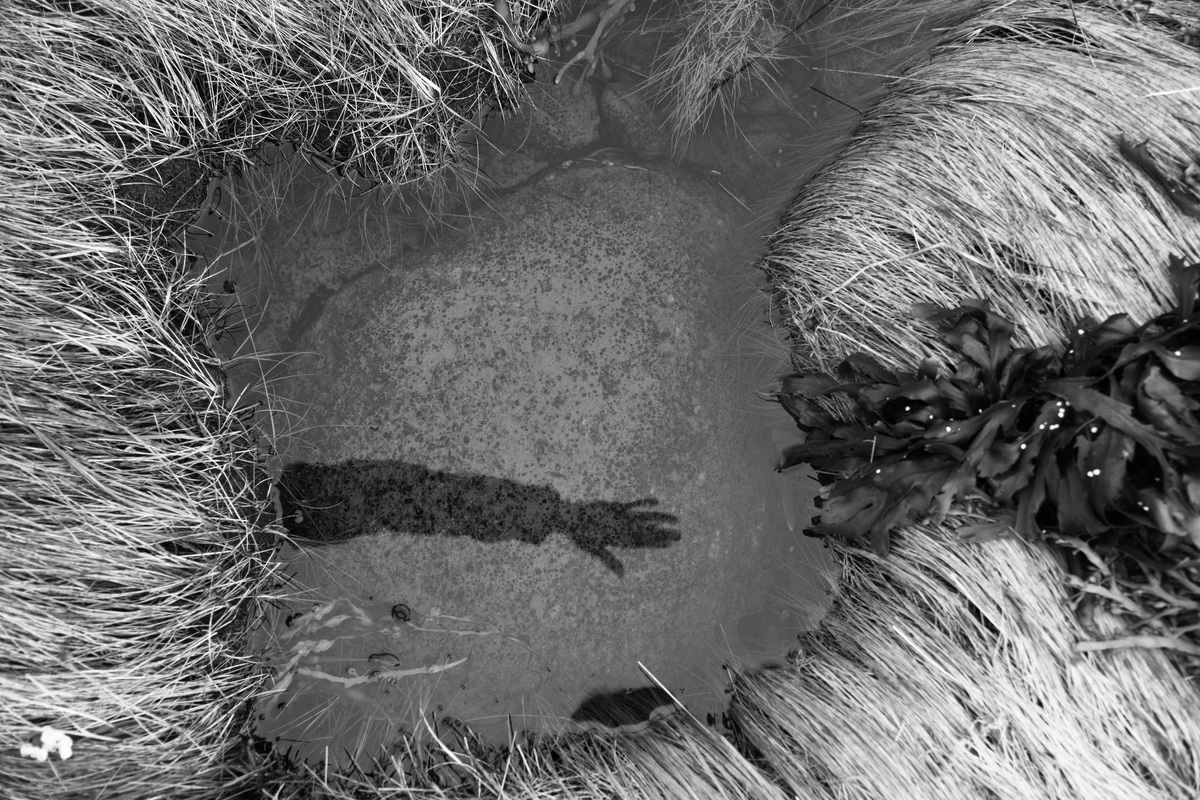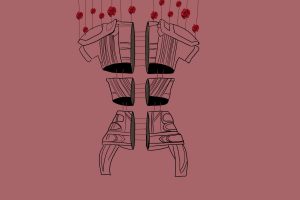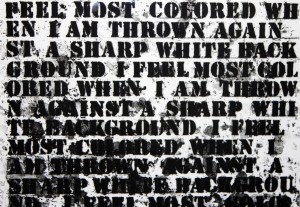
Doctored Front Lines
by Liz Murphy | May 19, 2020
In these unprecedented, uncertain times, as we navigate the new normal, I hope this note finds you and your family safe, as you know many people are struggling. Or something to that effect. The ‘new normal’ of email etiquette, so brilliantly satirised by Jessica Salfia’s poem ‘First lines of emails I’ve received while quarantining’, has become increasingly familiar over the last few months. They are symptomatic of a wider condition. Our quotidian language has undergone a significant shift owing to the COVID-19 pandemic. We have witnessed the weddings of words into some strange unions: ‘self-isolation’, ‘social distancing’, ‘flatten the curve’ – groupings of words I’d rarely heard mentioned before February overnight became ubiquitous across all media platforms. New portmanteaus have likewise burst into existence. ‘Quarantunes’, ‘quarantini’, and ‘covidiot’ all hastily hitched together by Twitter hashtags. One could say these phrases have ‘gone viral’, although in retrospect this oft-used metaphor seems a tad careless.
Yet, one pattern in amongst the onslaught of new terminology is the adoption of wartime vocabulary, a well-worn rhetoric that many politicians seem to find a comfortable fit in times of crisis, whether related to war or not. Much like the virus itself, this language has infected the global community. Xi Jinping recalled the words of Mao Zedong as he declared a “people’s war” against the virus. Donald Trump has pronounced himself a “wartime president”, despite dodging the Vietnam draft in his twenties, and has tweeted on numerous occasions that “together we will beat the invisible enemy!” Angela Merkel, who may have been trying to avoid direct comparison, nonetheless said that the challenge posed by Covid-19 is the greatest her country had faced since 1945. The Second World War, amongst others, acts as a universal litmus test for national and global crises.
Britain is no exception. Boris Johnson, perhaps fancying himself the next Churchill, declared that “we must act as in wartime.” In his nations address on the 10th May, Johnson assured the British public that “we are shining the light of science on this invisible killer, and we will pick it up where it strikes.” Matt Hancock, the health secretary, has urged Britons to emulate the ‘keep calm and carry on’ attitude championed during the Blitz: “Despite the pounding every night, the rationing, the loss of life, they pulled together in one gigantic national effort.” This national mindset has been assumed seamlessly. I’m sure that most people are guilty of labelling NHS doctors and nurses as working ‘on the front line’; we’ve all witnessed the anxious stockpiling of flour, soap and toilet paper as people prepare to hunker down in their homes, pre-emptively awaiting the enforcement of war rationing and disrupted food supplies.
It may be because of the situation’s enormity that we find ourselves reverting to this war narrative. According to psychotherapist Julia Samuels, when confronted with a new ‘thing’, be it a food, animal or in this case pandemic, a common response is to question not “what is it?” but “what is it like?”. Metaphors, Samuels argues, are a fundamental mechanism through which our minds conceptualize the world around us, especially in the face of complexity. Invoking the language of war and the metaphor of the virus as an enemy, something to battle against, helps us get to grips with this unprecedented challenge. Samuels continued that a natural method of grasping the vastness of the coronavirus is to revert to storytelling, curating a narrative to create a sense of control. This is where for the British people invoking the Second World War becomes crucial. What year in history could be more inspiring and instructive than 1940? The world’s future was dangling by a thread. History tells us that through the force of will and good ol’ British stoicism, that thread was kept from snapping. The character of ordinary people can make all the difference in the world. Matt Hancock’s urges to revive the Blitz spirit is deliberately using this narrative of collective effort to galvanise national cooperation, after so many months of partisan fighting in British politics and underlining that in this crisis we must prioritise the needs of the nation over personal wants. Memory evidently remains one of the most powerful resources at a politician’s disposal.
But the problem with falling back on this narrative is that the ‘Blitz spirit’ is a more complex phenomenon than the conventional myth would have us believe. The memory that has stuck in popular imagination is widely viewed by historians to be a doctored version of the truth. The romanticised notion of the whole nation pulling together, for example – the one that the current government exhorts us to replicate – is not entirely true. Within weeks of the declaration of war in 1939, the evacuation of 1.5 million working-class children and mothers to the safety of the suburbs and countryside had been organised. But instead of being welcomed with open arms by those better-off members of society with whom they were billeted, these evacuees were often deeply resented. Likewise, in London’s East End, Jewish, African, and Indian communities complained that they were made to feel unwelcomed in air raid shelters. The limits of public togetherness were perhaps most acutely felt in disparity of bomb shelters, an uncomfortable parallel with the crisis today. As members of the establishment were able to take refuge in country houses, in comfort and out of the way of the bombs, or in expensive basement clubs in the city, the lower-middle and working classes were forced to stay in the cities and face up to the deadly raids with inadequate provision for shelter. Perhaps if the state had been more alive to the social realities facing the threatened population, a better shelter system could have been put in place and the death tolls lowered.
In its attempts to cover up low morale, the government tried to show that life in London was carrying on as normal. The famous photograph of the London milkman resolutely, almost cheerfully, picking his way through the rubble of bombed buildings was staged, turning out to be the photographer’s assistant in borrowed uniform. This notorious image of resilience was fabricated to reinforce the designed narrative of ‘keep calm and carry on’. It was the belief that it was in everyone’s best interest to read that even those worst affected were managing just as well as before. But papering over the psychological impacts of this distressing time, or in most cases leaving them undocumented entirely, excluded this serious aspect of the ‘Blitz spirit’ from the confectioned narrative. By invoking the ‘Blitz spirit’ in today’s modern discourse, our politicians are continuing to promote this false idea and expecting the public to demonstrate extraordinary resilience whilst excusing themselves from responsibility once again.
Framing COVID-19, or any disease outbreak, in the metaphoric frame of war can influence the way we think about those who die from the infection. In insisting on this Blitz narrative, the deaths from the virus become assimilated with collateral damage. Lisa Keranen, a medical rhetorician, argues that describing the virus as something that has attacked our nations lets us minimise the resulting deaths as “casualties rather than unnecessary and preventable tragedies”. Keranen believes that this linguistic choice further allows governments to shift the focus away from their unpreparedness to individual responsibility – “if we all just wash our hands and stay inside, then we can do our part in this ‘battle’.” And it seems that through using this battle language, we are reducing the complexity of the pandemic. By purely focusing on beating the virus, winning this war, the factors that might have facilitated its proliferation or increased the risk for certain populations are sidelined.
This bellicose language is problematic enough in this broad application. But these metaphors have pervaded the way we speak about individual infections too. By unconsciously instilling the belief that the COVID-19 virus is an ‘invisible enemy’ to be battled with, we set an inherently adversarial tone, and dichotomize the outcomes of so-called ‘victims’ into victory and defeat. This is an entirely misleading argument. It is offensive to suggest that those inflicted by the disease have been called to combat, as if their survival depends on inherent willpower rather than medical, social and economic factors far beyond their control. When Dominic Raab told the British press that he was confident Boris Johnson would pull through because “he is a fighter”, Newsnight presenter Emily Maitlis firmly rejected his statement, saying “you do not survive the illness through fortitude and strength of character, whatever the prime minister’s colleagues will tell us.” The latest slogan ‘Stay Alert’ only serves to perpetuate this narrative as if it is now the responsibility of individuals to be constantly ‘en garde’ to fight this physical assailant when the RNA strand is nothing of the sort.
Military language being used in a medical context is hardly new. Louis Pasteur deployed imagery of invaders to explain germ theory in the 1860s; before him, John Donne ruminated on the “miserable condition of man”, describing illness as a “siege…a rebellious heat, [that] will blow up the heart, like a Myne.” Within the medical profession, this metaphorical language is almost normalised. One study, from 2010, found that physicians use metaphors in almost two-thirds of their conversations with patients who have serious illnesses. Indeed, physicians who used more metaphors were seen as better communicators by patients, who reported less trouble understanding them, and felt as though their doctor made sure they understood their conditions. Yet at the same time, the metaphorical framing that we choose to use massively influences our attitudes towards disease and treatment. A 2019 study by psychologists on the impact of war metaphors in cancer care found that people’s opinions on treatment varied depending on what types of metaphorical language was used, including war, journey, and no metaphors. They found that after reading patient accounts of cancer treatments that used war metaphors, people rated cancer treatment as more difficult than those who read the same passages with journey metaphors, or no metaphors at all. Other studies around cancer patients have found that those who view their disease as an ‘enemy’ tend to have higher levels of depression and anxiety, and poorer quality of life than those who ascribe a more positive meaning.
For cancer patients, like those infected with coronavirus, the brave, fighter, warrior, and survivor standard descriptors can put an awful lot of pressure on the newly diagnosed. Placing the burden of healing on the patient undoubtedly incenses many, who don’t care to be told that they are ‘winning their war’, or to be remembered as having ‘lost their battle’. This does of course not account for all suffers of cancer, coronavirus, or any other illness. Some may find such language to be motivational and encouraging. But the recent research that has been carried out highlights how the literature and language surrounding the treatment of disease and illness should be communicated with more sensitivity than in its current state.
Although there are legitimate comparisons between pandemics and wars that go well beyond rhetorical devices to spur on the national effort, it is clearly not always wise to provoke them. It seems the ‘spirit of the Blitz’ is too comforting a story for Britons to abandon and if it inspired the country to stop bulk buying toilet rolls and to actually pull together like the romanticised story suggests, then perhaps it has served a useful purpose in 2020. Likewise, metaphors appear an inevitability in how we discuss coronavirus, but there’s no reason we have to stick to just one metaphor, regardless of what certain politicians might prefer. The war metaphors should stop before they enter our hospitals, care homes, and ICUs. No one signed up for conscription for this war, so perhaps we should think twice before labelling those individuals as fighters.∎
Words by Liz Murphy. Photography by Emma Rath.




